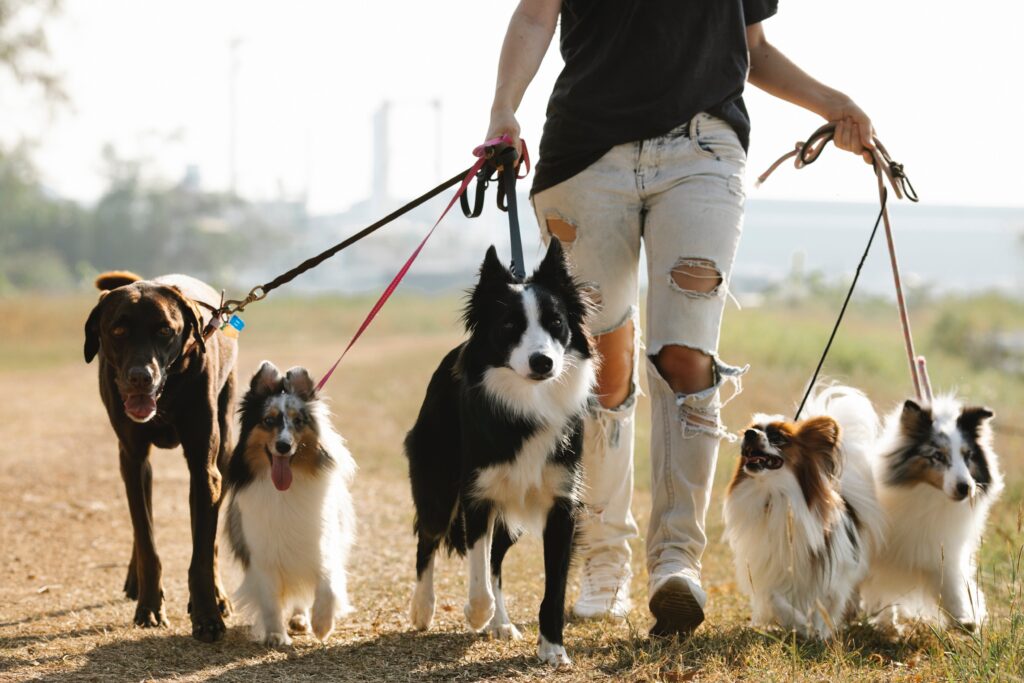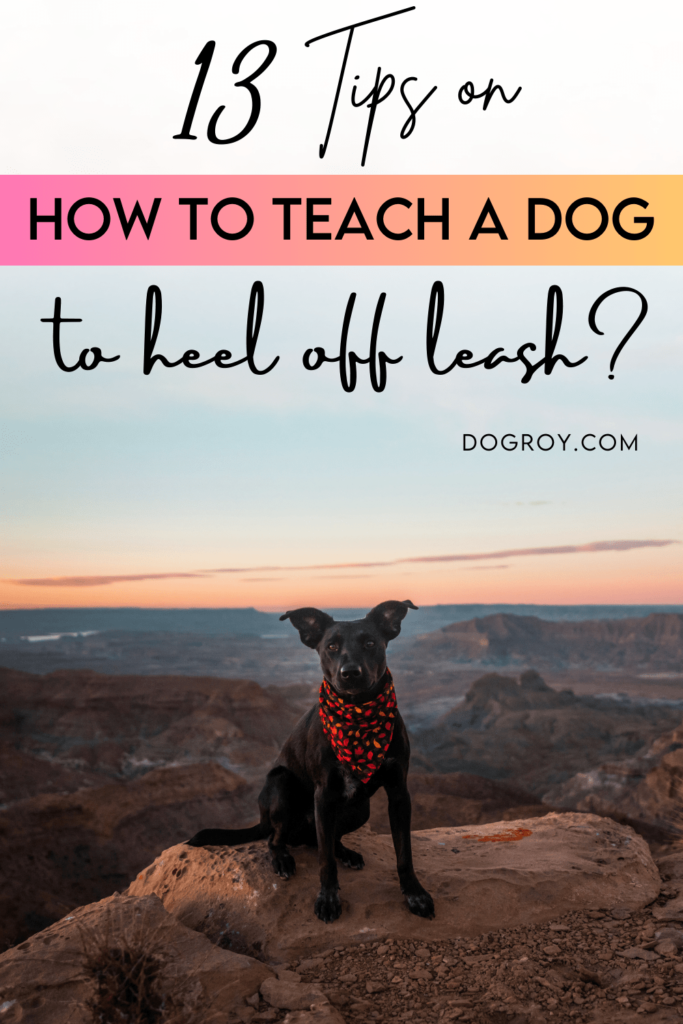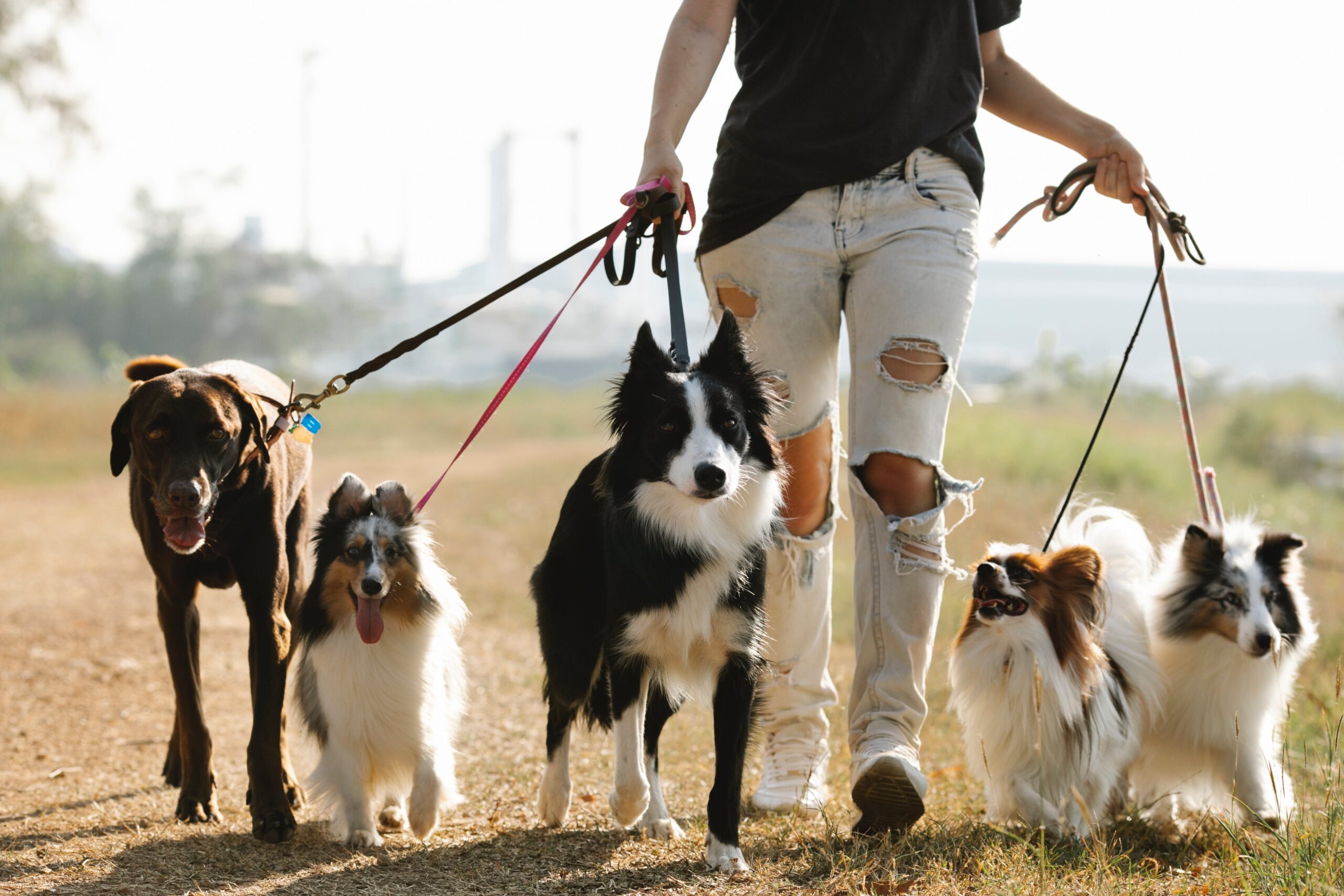Teaching your dog to heel off-leash is a rewarding endeavor that enhances both freedom and control during walks.
If you’re eager to master the art of off-leash heeling, our guide provides 13 expert tips to turn your canine companion into a well-trained and attentive walking partner.
Fortunately, the concept of teaching your dog to heel off-leash opens up a world of freedom and cooperation.
This “How to Teach a Dog to Heel Off Leash” guide delves into the art of unleashing your dog’s potential for a controlled and enjoyable walking experience, offering valuable insights and strategies on how to achieve the coveted off-leash heel command.
In the fast-paced world of dog training, mastering the off-leash heel command is akin to unlocking a secret language between you and your four-legged companion.
This guide is your roadmap to that language, providing practical steps and expert advice to empower both you and your dog.
Let’s dive into the journey of teaching your dog to heel off-leash and discover the transformative impact it can have on your walks and the bond you share.
Table of Contents
13 Tips on How to Teach a Dog to Heel Off Leash: Mastering Off Leash Heeling

1] Establish a Strong On-Leash Heel
Before venturing into off-leash training, ensure your dog has a strong foundation in on-leash heeling.
Mastering this skill is crucial as it establishes the groundwork for a seamless transition to off-leash control.
Focus on consistent cues and rewards to reinforce the desired heeling behavior.
Consistency in training builds the trust and communication necessary for successful off-leash interactions.
Tip: “Mastering this skill lays the groundwork for a seamless transition to off-leash control.”
2] Master Recall Commands
A reliable recall is essential for off-leash heeling.
Teach your dog strong recall commands, such as “come” or “here.”
Practice in controlled environments before attempting off-leash heeling in more distracting settings.
Consistency is key for a responsive recall.
Gradual and positive exposure to recall commands builds a strong association between coming when called and positive outcomes.
3] Choose the Right Location
Overview: “Start off-leash training in a secure and familiar environment with minimal distractions.”
Commence off-leash training in a secure and familiar environment with minimal distractions.
As your dog becomes proficient, gradually introduce new locations with increasing levels of stimuli.
This gradual progression ensures a positive learning experience and helps your dog adapt to different environments while maintaining focus on you.
4] Invest in a Quality Off-Leash Training Collar
Selecting a reliable off-leash training collar is crucial for safety and control.
Options such as martingale or slip collars provide gentle correction without compromising comfort.
Prioritize your dog’s well-being and invest in a collar suitable for training purposes.
In the collar of trust, safety and control weave the fabric of off-leash confidence.
Proper fitting and appropriate use of the collar contribute to effective off-leash training.
5] Use a Long Line for Added Control
In the initial stages of off-leash training, employ a long line to maintain control while allowing freedom.
This training aid acts as a safety net, giving you the ability to intervene if needed.
Gradually decrease reliance on the long line as your dog gains confidence.
The long line serves as a transitional tool, facilitating a smooth shift from on-leash to off-leash freedom.
A long line is an excellent tool to bridge the gap between on-leash and off-leash training. It provides a controlled environment for learning
6] Practice Focus and Attention
Teach your dog to maintain focus and attention during off-leash walks.
Use treats, toys, or verbal praise to reward attentive behavior.
Consistent positive reinforcement builds a strong connection between you and your dog, promoting reliable heeling.
Incorporate engaging activities during walks to keep your dog mentally stimulated and focused on you.
• Use treats, toys, or verbal praise for rewards • Consistent positive reinforcement builds a strong connection • Incorporate engaging activities for mental stimulation and focus
7] Utilize High-Value Rewards
Incorporate high-value rewards, such as favorite treats or interactive toys, to motivate your dog during off-leash training.
Discover what truly excites your dog and use these rewards strategically to reinforce proper heeling behavior.
Motivation plays a key role in keeping your dog engaged and responsive during off-leash activities.
8] Employ Positive Reinforcement
Overview: “Celebrate and praise your dog for successful off-leash heeling.”
Celebrate and praise your dog for successful off-leash heeling.
Positive reinforcement reinforces desired behavior and strengthens the bond between you and your canine companion.
Regularly acknowledge and reward moments of attentive heeling.
Positive reinforcement creates a positive association with off-leash activities, making them enjoyable for your dog.
9] Be Patient and Consistent
Off-leash heeling requires patience and consistency. Set realistic expectations and progress at your dog’s pace.
Consistent cues, rewards, and positive reinforcement create a positive learning environment, fostering a reliable off-leash heeling behavior.
Patience is key, especially when encountering challenges or distractions during training sessions.
Tip: “Set realistic expectations and progress at your dog’s pace for a positive learning environment.”
10] Gradual Exposure to Distractions
Expose your dog to distractions gradually during off-leash training.
Start with mild stimuli and incrementally introduce more challenging distractions.
Building resilience through gradual exposure enhances your dog’s ability to maintain focus in various environments.
Gradual exposure helps your dog adapt and respond appropriately, even in the presence of enticing distractions.
11] Vary Your Walking Routes
Keep off-leash walks engaging by varying your walking routes.
Exploring different environments challenges your dog mentally and physically, reinforcing the learned off-leash heeling behavior in diverse settings.
Variety in walking routes prevents monotony, keeping your dog’s interest piqued and promoting adaptability in various surroundings.
• Keep off-leash walks engaging by varying routes • Exploring different environments challenges dog mentally and physically • Reinforces off-leash heeling behavior in diverse settings • Prevents monotony, keeps dog's interest, and promotes adaptability.
12] Consistent Verbal Cues
Establish clear and consistent verbal cues for off-leash heeling.
Whether using traditional commands like “heel” or personalized cues, clarity in communication is essential.
Reinforce these cues consistently to strengthen your dog’s understanding.
Consistent verbal cues become signals for your dog to maintain the desired heeling position, contributing to effective off-leash control.
13] Monitor Body Language
Overview: “Pay close attention to your dog’s body language during off-leash heeling.”
Pay close attention to your dog’s body language during off-leash heeling.
Recognizing signs of distraction or discomfort allows you to intervene early and guide your dog back to focused heeling.
Understanding canine signals is instrumental in successful off-leash training.
Learn to interpret your dog’s body language to address any potential challenges and maintain a positive training experience.
How to Teach a Dog to Heel Off Leash: FAQs
How long does it take to teach a dog to heel off-leash?
The duration varies depending on the dog’s breed, age, and prior training. Consistent practice and positive reinforcement can lead to significant progress within a few weeks. Patience is crucial in the training process.
Can any dog learn to heel off-leash?
While any dog can learn off-leash heeling, some breeds may require more time and patience. Tailor your training approach to your dog’s individual characteristics and always prioritize safety during off-leash activities.
What if my dog gets easily distracted during off-leash walks?
If distractions pose challenges, revert to on-leash training in distracting environments before attempting off-leash heeling. Gradual exposure and positive reinforcement will help your dog overcome distractions over time.
Is off-leash training suitable for older dogs?
Yes, older dogs can learn off-leash heeling with patience and consistent training. Adapt the training to accommodate any physical limitations and choose appropriate environments for learning.

Conclusion:
Mastering off-leash heeling is a fulfilling achievement that enhances your dog’s freedom and your control during walks.
By following these 13 expert tips on “How to Teach a Dog to Heel Off Leash,” you’ll embark on a journey towards a well-trained, attentive, and enjoyable walking companion.
As you navigate this journey together, remember that the process is as valuable as the destination.
Embrace the learning curve, celebrate the small victories, and savor the newfound freedom that comes with a well-trained, off-leash heeling companion.
With dedication and the insights shared in this guide, you and your dog can stride confidently into a future of harmonious walks, united by the unspoken understanding of the off-leash heel command.





